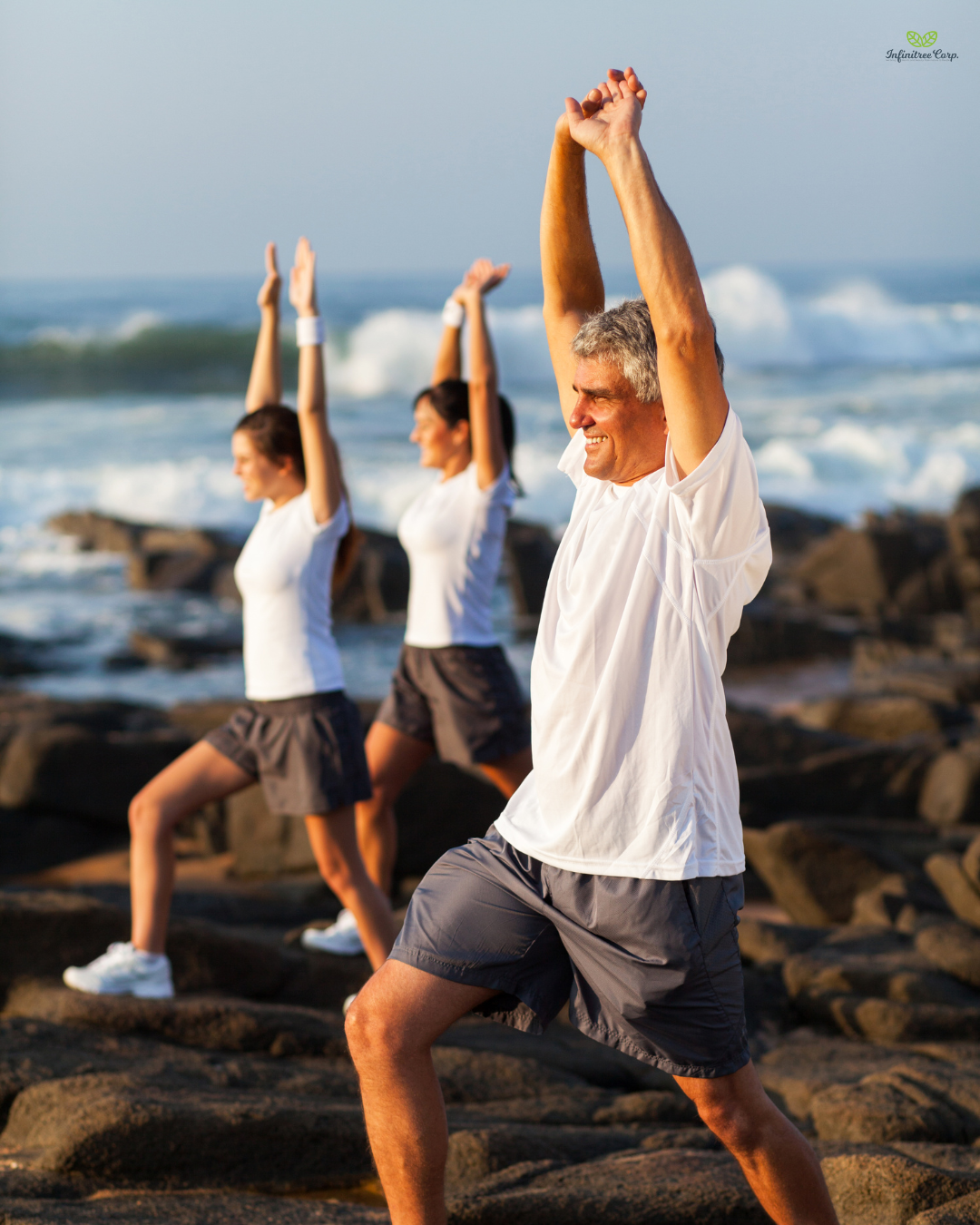
Joint Health for Weekend Warriors: Avoiding Injuries When You’re Only Active on Weekends
InfinitreeEditor.Jo
My Weekend Workouts Were Wearing Me Down, Not Lifting Me Up
I used to tell myself that weekend sweat sessions were enough to stay in shape. After all, I was “too busy” during the week—but come Saturday, I was all in: tennis, long hikes, a game of basketball with friends.
But then came the aftermath: sore knees, tight hips, stiff ankles that lingered into Monday… and sometimes Tuesday.
Eventually, I realized I wasn’t just sore—I was overloading my joints without preparing them.
If you're a fellow "weekend warrior," chances are you're active two days a week but sedentary most others. While this approach keeps life fun and flexible, it can also increase your risk of joint injuries, stiffness, and long-term wear—especially if you're over 35.
Here’s how to protect your joints, perform better, and bounce back faster, even if weekends are your main time to move.
Bursts of Activity Without Prep = Joint Stress
Weekend warriors often deal with:
-
Tight muscles from sitting all week
-
Limited mobility
-
Weak stabilizing muscles
-
Poor warm-up or cooldown habits
-
Overcompensation in knees, hips, or shoulders
These factors make your joints the “shock absorbers” of your weekend ambition.
Common weekend warrior injuries:
-
Knee pain or inflammation (runner’s knee, meniscus strain)
-
Shoulder strain (tennis, weightlifting, golf)
-
Achilles tendonitis or ankle sprains (trail running, basketball)
-
Hip stiffness or lower back tension (cycling, hiking)
And here’s the kicker: Most injuries aren’t from doing too much—they’re from doing too much too fast.
What Happens to Joints Under Sudden Load
Joints are built to handle movement—but they need time to lubricate, stabilize, and adapt to load.
When you go from sedentary to intense in a short burst:
-
Synovial fluid doesn't distribute properly
-
Cartilage compression occurs without full recovery
-
Muscles don’t absorb shock, forcing joints to take the hit
-
Inflammation rises post-activity, leading to swelling and stiffness
This makes you more susceptible to chronic issues like:
-
Osteoarthritis
-
Ligament strains
-
Cartilage wear
-
Mobility loss over time
The Solution: Joint-Friendly Strategy for Weekend Warriors
The key is not to stop being active—but to become joint-smart. You can still enjoy intense, fun workouts—just give your body the tools and routines it needs to support you.
Step 1: Prepare Before the Weekend Hits
🗓️ Monday–Friday micro-routines:
Even 5–10 minutes a day can make a big difference.
-
Hip and ankle mobility drills
-
Wrist and shoulder circles
-
Glute bridges or wall sits for joint stability
-
Calf raises and toe taps for ankle/knee prep
💡 These small movements wake up the stabilizer muscles that protect your joints during impact.
Step 2: Always Warm Up—Even for “Fun” Activities
No matter your weekend plan, never skip the warm-up.
Effective 5-minute joint warm-up:
-
Leg swings (front/back and side) – hip and knee prep
-
Arm circles and shoulder rolls – upper body activation
-
Bodyweight squats and lunges – ankle/knee mobility
-
Marching in place with arms – gentle heart rate elevation
💡 Start slow, build gradually. Save explosive moves for after your joints are fully engaged.
Step 3: Focus on Recovery as Much as Performance
Joint resilience is built in recovery—not just in action.
Post-activity recovery plan:
-
Foam rolling (quads, calves, back)
-
Stretching with deep breathing
-
Epsom salt bath or warm shower
-
Chondroitin-rich supplementation for cartilage repair
-
Hydration and anti-inflammatory meals (e.g. salmon, sweet potatoes, leafy greens)
💡 Don’t go from sprinting to sofa. A 5–10 minute cooldown helps your joints reset.
Step 4: Support from the Inside Out
Joints need more than movement—they need nutritional and structural support.
Meet your new weekend ally:
Infinitree’s Chondroitin Sulfate Classic 1200
-
1200mg of high-purity bovine chondroitin sulfate
-
From grass-fed Canadian cattle for clean, traceable support
-
Promotes joint lubrication, cartilage integrity, and elasticity
-
Reduces post-exercise joint inflammation and stiffness
-
GMP-certified and free from fillers or artificial ingredients
💊 Take on Friday night or Saturday morning before activity, and again after your workout or hike for maximum support.
Step 5: Know When to Rest
Being active is great. But rest is just as powerful when it comes to joint longevity.
Watch out for:
-
Persistent swelling or one-sided pain
-
Clicking or catching sensations in joints
-
Extended soreness that lasts beyond 48 hours
💡 Schedule restorative weekends every 3–4 weeks with walking, stretching, and low-impact activity to let your joints catch up.
Sample Joint-Friendly Weekend Routine
| Time | Saturday | Sunday |
|---|---|---|
| 8:00 AM | 5-min warm-up mobility flow | Morning walk or light bike ride |
| 9:00 AM | Tennis match or gym session | Hiking or group sport |
| 12:00 PM | Hydration + anti-inflammatory meal | Stretch + light foam rolling |
| 3:00 PM | Infinitree Chondroitin + protein smoothie | Dry brushing + warm shower |
| 8:00 PM | Epsom salt bath + early bedtime | Restorative yoga + supplement |
Conclusion: You Don’t Have to Choose Between Weekend Fun and Joint Health
Being a weekend warrior isn’t the problem. The real issue is going from 0 to 100 without support.
When you integrate:
-
Weekday mobility prep
-
Proper warm-ups
-
Thoughtful recovery
-
Supplemental support like Chondroitin Sulfate Classic 1200
…you can stay active without paying the price on Monday.
Because strong joints don’t come from pushing harder.
They come from training smarter and recovering better.
Disclaimer: This blog is for informational purposes only and is not intended as medical advice. Please consult your healthcare provider before beginning any new supplement or exercise regimen.









